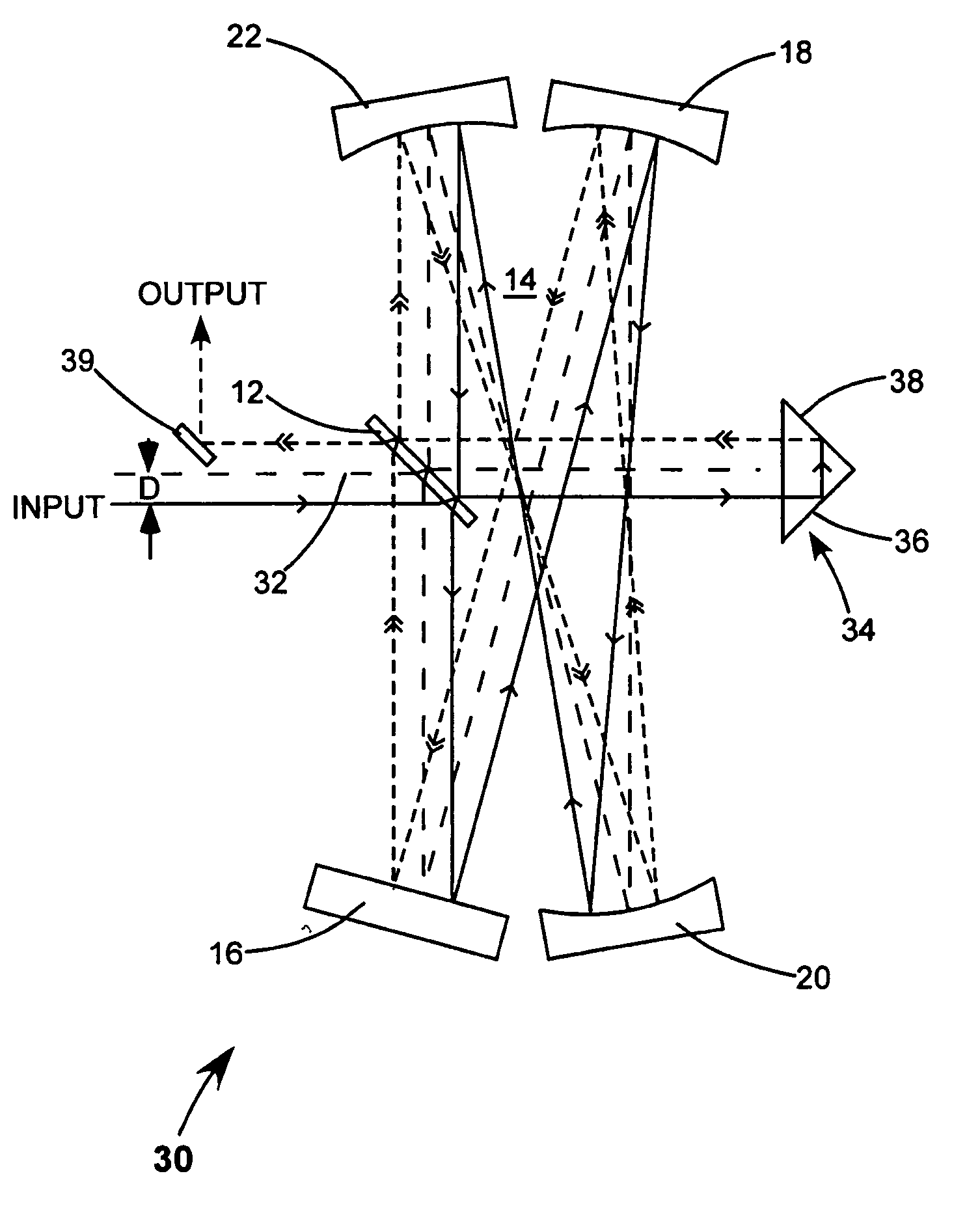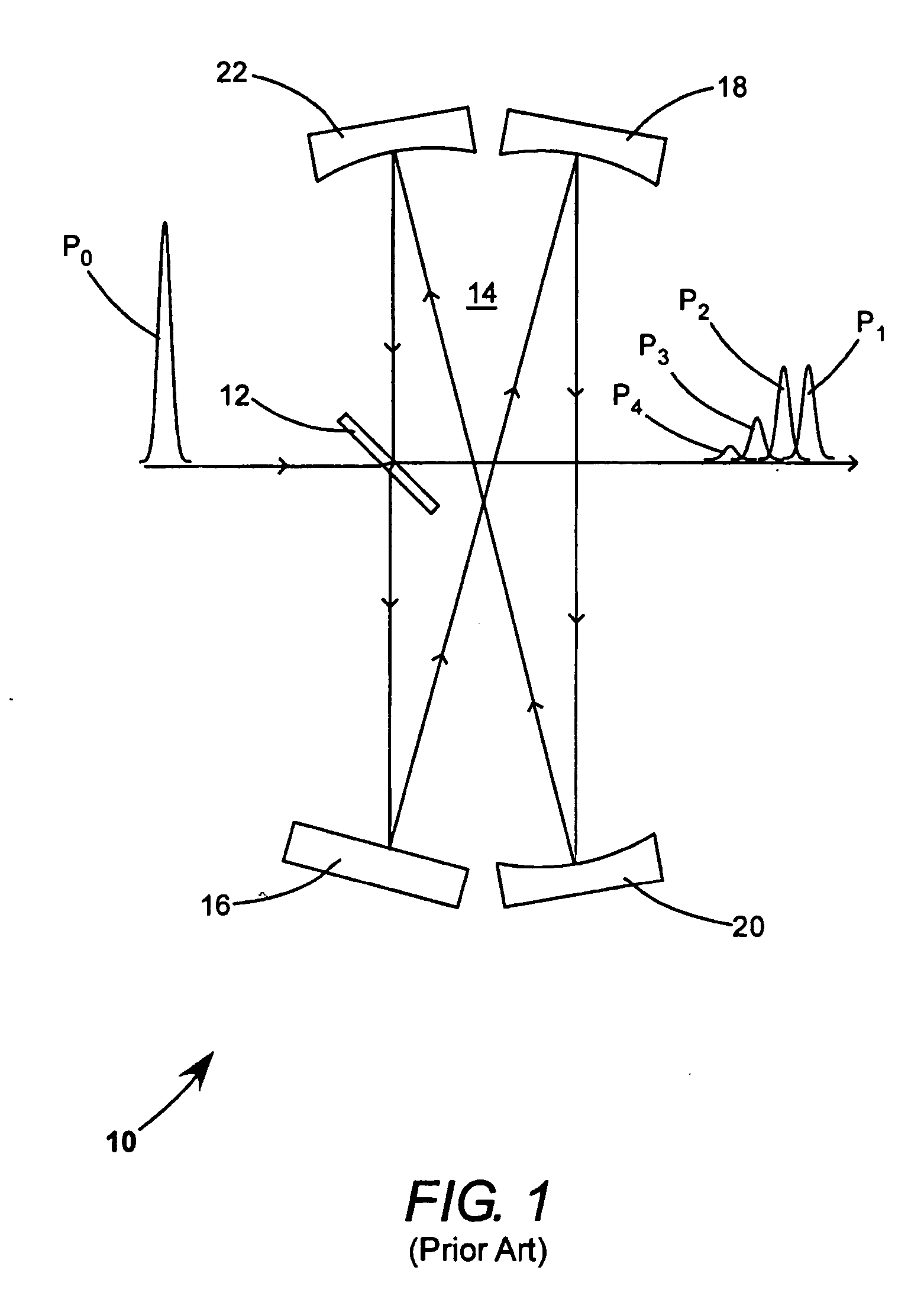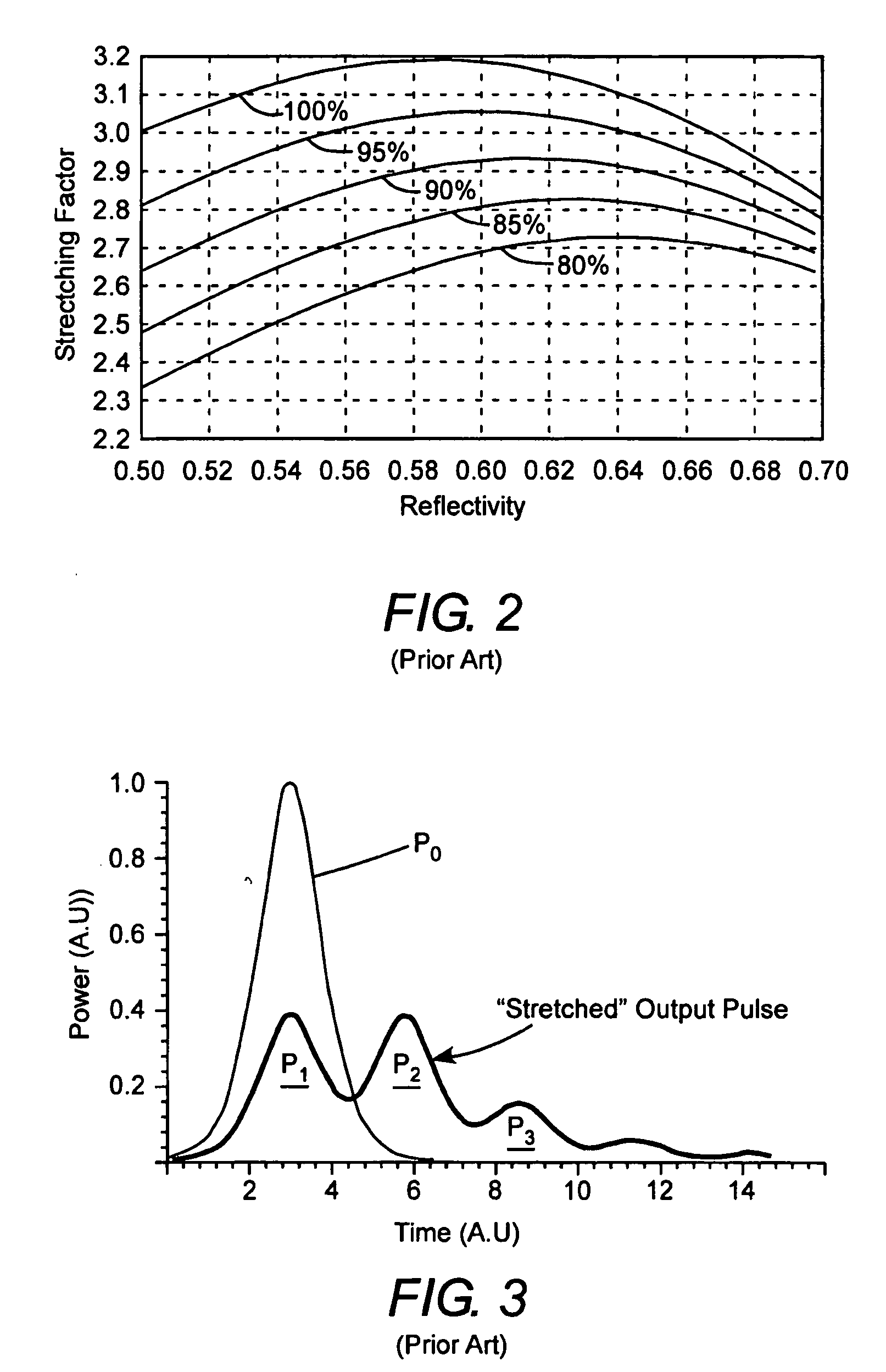Double-pass imaging pulse-stretcher
- Summary
- Abstract
- Description
- Claims
- Application Information
AI Technical Summary
Benefits of technology
Problems solved by technology
Method used
Image
Examples
embodiment 30
[0024] Referring now to the drawings, wherein like components are designated by like reference numerals, FIG. 4 schematically illustrates one preferred embodiment 30 of a double pass relay-imaging pulse-stretcher in accordance with the present invention. Pulse-stretcher 30, in this embodiment, includes a delay loop 14 with mirrors 16, 18, 20, and 22 arranged as described above in the pulse-stretcher of FIG. 1 to form a relay imaging optical system of about unit (about 1:1) magnification. The optical axis of the delay loop is depicted in FIG. 4 by a long dashed line 32.
[0025] Pulse-stretcher 30 makes use of the fact that the relay-imaging delay loop is insensitive to the position and pointing of an incident beam. After one round trip in the delay loop, the size, position, pointing, and divergence of the input beam are replicated, provided that the delay loop itself remains properly aligned. Tilting the delay loop or moving the delay loop (pulse-stretcher assembly), within certain lim...
embodiment 40
[0038]FIG. 10 schematically illustrates another preferred embodiment 40 of a double-pass, relay-imaging pulse-stretcher in accordance with the present invention. Pulse-stretcher 40 is similar to pulse-stretcher 30 of FIG. 4, with an exception that beamsplitter 12 of pulse-stretcher 30 is replaced in pulse-stretcher 40 by two different beamsplitters 12A and 12B on opposite sides of the optical axis of delay loop 14. These two beamsplitters, while depicted as being on separate substrates in FIG. 8, may simply be zones of different reflectivity on a common substrate. Beamsplitter 12A controls energy distribution in the once-stretched pulse, and beamsplitter 12B controls energy distribution in the twice stretched pulse.
[0039] Providing two separate beamsplitters means that one of the beamsplitters can have a different reflectivity from the other. For any given round trip loss value of the delay loop it is possible to find two different reflectivity values that will provide equal power i...
PUM
 Login to View More
Login to View More Abstract
Description
Claims
Application Information
 Login to View More
Login to View More - R&D
- Intellectual Property
- Life Sciences
- Materials
- Tech Scout
- Unparalleled Data Quality
- Higher Quality Content
- 60% Fewer Hallucinations
Browse by: Latest US Patents, China's latest patents, Technical Efficacy Thesaurus, Application Domain, Technology Topic, Popular Technical Reports.
© 2025 PatSnap. All rights reserved.Legal|Privacy policy|Modern Slavery Act Transparency Statement|Sitemap|About US| Contact US: help@patsnap.com



